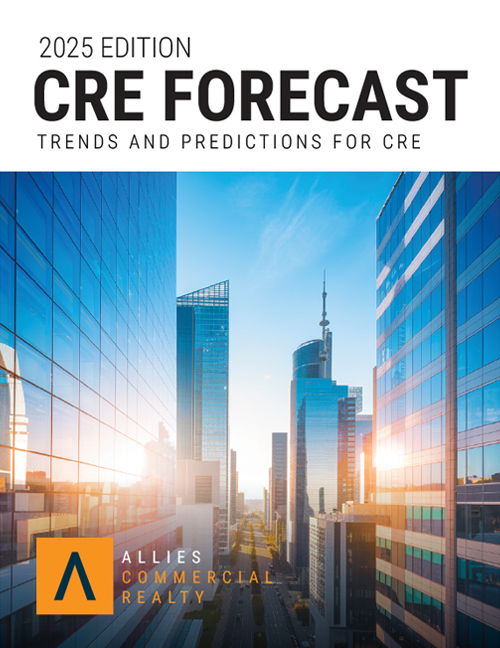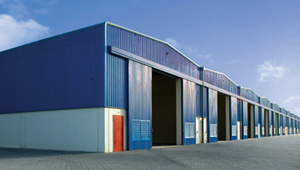Understanding CRE Development Utilizing a Rent Constant

The commercial real estate sector thrives on numbers; every dollar invested must pull its weight in returns. But how do you quantify the financial performance of a project? Whether you’re a developer planning a new project, an investor evaluating opportunities, or a broker working with clients, the ability to measure a property’s financial performance is crucial. The rent constant provides part of the answer, working as a straightforward yet powerful metric for assessing the viability of commercial real estate developments. The rent constant can also serve as a benchmark for comparing projects, a tool for setting lease rates, and a metric for gauging market dynamics. This article explores the mechanics of the rent constant, its practical applications, and its role in shaping sound property strategies. Let’s dive in.
What is the Rent Constant?
The rent constant is a critical financial parameter commonly used in build-to-suit (BTS) projects. It is used to determine lease rates and assess the economic feasibility of development projects. Expressed as a percentage, the rent constant is a predetermined factor for calculating the initial annual rent in a BTS lease agreement. We can calculate the Initial Annual Rent Income by multiplying the total development cost by the rent constant.
Initial Annual Rent Income = Rent Constant × Total Development Cost
Significance of High and Low Rent Constants in Profitability and Risk Assessment
The rent constant is a compass for commercial real estate professionals, guiding feasibility, returns, and risk decisions. Understanding what high and low rent constants mean is essential for making sound, strategic choices.
High Rent Constant: A high rent constant(10%-15%) indicates that a significant portion of the development’s total cost is expected to be recovered through rental income. This scenario often points to promising revenue streams, but it can also elevate the financial risk, such as,
Premium Pricing Strategy: Rental rates may be positioned at the higher end of the market, relying on strong and sustained tenant demand to support the premium. While lucrative, this strategy requires unwavering tenant demand to maintain cash flow, increasing exposure to market risks.
Economic and Market Dependence: Changes in local demand or broader economic conditions can significantly affect rental income, resulting in vacancies or adjustments to lease terms to maintain occupancy.
Example: A retail shopping center with a 15% rent constant means that for every $500,000 in development costs, the commercial real estate property brings in $75,000 annually in rent. This could be attractive for investors, but it also implies reliance on maintaining high foot traffic and tenant occupancy rates to sustain profitability, particularly during economic downturns.
Low Rent Constant: A low rent(3%-6%) constant means that the rental income is relatively small compared to the development cost. While this might suggest more conservative pricing or stability, it can also mean:
Prolonged ROI Timeline: Profitability may not materialize quickly; investors may face a lengthier timeline before the property yields significant returns, necessitating a strategic outlook.
Emphasis on Long-Term Gains: The property’s success is more likely tied to its appreciation in value over time than immediate revenue streams.
Example: An office building with a 4% rent constant suggests that for every $10 million in development costs, the property generates just $400,000 annually in rental income. This could indicate an initial strategy to attract tenants with below-market rents, expecting higher returns as the property stabilizes and the market conditions improve.
Developers and investors can make informed decisions about a property’s profitability by analyzing the rent constant alongside other financial indicators, such as cap rates, cash-on-cash returns, and occupancy trends.
Let’s transform your property goals into reality.
Schedule a Discovery CallThe Role of Rent Constant in Determining Cash Flow Potential
The rent constant is a key metric for evaluating a property’s cash flow potential, especially in the early stages of development. By leveraging the rent constant in the cash flow analysis, stakeholders can better anticipate financial outcomes, identify risks, and structure projects for sustainable success.
Positive Cash Flow: A favorable rent constant can indicate strong cash flow to cover operational costs and loan payments, creating a cushion for unexpected expenses or market fluctuations.
Risks of Underperformance: The property may struggle to generate adequate cash flow if the rent constant is too low relative to the development costs. This can place significant financial strain on developers and investors, who may be forced to cover shortfalls out of pocket or rely heavily on external financing.
Factors Affecting Rent Constant in CRE Development
Determining the rent constant isn’t a one-size-fits-all approach. Various factors shape this process, from broader market conditions to a property’s unique features. Evaluating these variables is essential to aligning rental strategies with development goals.
Location: A property’s geographic positioning is critical in establishing rent constants, as it directly influences tenant demand and rental potential. Properties in prime markets with robust economic activity, ample amenities, and limited supply generally achieve higher rent constants, reflecting their competitive positioning and steady tenant demand. Conversely, properties in secondary or tertiary markets, where demand is lower and vacancies are higher, often require more cautious rental projections to remain competitive.
Property type: Different asset classes have constant rent expectations based on leasing structures, risk profiles, and operational requirements. The table given below shows how rent constants vary across different CRE asset classes:
| Property Type | Typical Rent Constant | Key Influencing Factor | Risk & Return Considerations |
|---|---|---|---|
| Office | Moderate | Lease length, tenant credit quality, operating costs | Stable income but sensitive to economic downturns and vacancies |
| Retail | Variable | Location, foot traffic, lease structures (e.g., percentage rent) | High upside in prime locations, but vulnerable to market shifts |
| Industrial | Lower | Simple structures, long lease terms, low maintenance costs | Lower volatility but limited rent growth potential |
| Multi-family | Higher | Shorter lease terms, tenant turnover, occupancy rates | Strong cash flow potential but requires high occupancy to remain profitable |
Development Costs: The development costs involved in a project, including land acquisition, construction expenses, and financing, are essential factors in determining the rent constant. Higher development costs necessitate higher rental rates to ensure a sustainable return on investment. However, unforeseen increases in expenses can undermine the rent constant’s effectiveness, potentially reducing expected returns. For this reason, developers must keep costs under control and plan effectively, ensuring that rental income aligns with the project’s financial goals and mitigating the risk of financial strain.
Lease terms: The structure of lease terms plays a significant role in shaping the rent constant. Long-term leases, frequently used in office and industrial sectors, provide predictable and stable income but may restrict future rent growth. Shorter leases, often found in retail and multifamily properties, typically require higher rents to offset the risk of tenant turnover and vacancies. Additionally, annual rent escalations can impact rental income over time, affecting the overall rent constant calculation.
Market Trends and Economic Conditions: Market dynamics and broader economic conditions are critical in shaping rent constants, directly affecting rental demand, pricing strategies, and overall project feasibility. In a strong market, business expansion and economic growth can support higher rent constants, whereas economic downturns may require adjustments to sustain occupancy levels. Inflation influences rent pricing as rising labor, materials, and operations costs often necessitate rent increases, though these must remain within market tolerances. Interest rates also impact rent constants—lower rates reduce financing costs, allowing for more competitive rents, while higher rates may require increased rental income to cover expenses. Additionally, supply and demand fluctuations dictate rental pricing, with market oversupply driving rents down and constrained availability enabling higher rent constants. Regional factors, such as urban versus suburban demand trends and sector-specific conditions, like the differing needs of logistic hubs versus office spaces, further shape rental strategies. Developers must carefully assess these variables to establish a rent constant that balances market competitiveness with long-term profitability.
Tenant Creditworthiness: A tenant’s financial stability is key to ensuring reliable rental income and long-term investment security. Creditworthy tenants with strong financial standing provide consistent rent payments, minimizing the risk of defaults and vacancies. On the other hand, tenants with weaker financial profiles, such as startups or businesses in volatile industries, may present a higher risk of missed payments or lease renegotiations, requiring a more cautious approach when setting the rent constant. For developers and commercial real estate investors, evaluating tenant creditworthiness is essential in assessing a property’s financial viability and ensuring sustainable cash flow.
Benefits of Using Rent Constants:
In commercial real estate, rent constants offer developers and investors a reliable metric for managing cash flow, pricing, and long-term asset growth. Some key benefits of rent constant include:
Predictability and Stability: Rent constant helps estimate rental income and maintain consistent cash flow.
Risk Mitigation: It facilitates reducing financial uncertainty by aligning rental rates with market conditions.
Financing and Loan Structuring: Assists lenders in assessing a property’s income potential for loan approvals.
Guidance for Pricing and Leasing Strategies: Supports competitive lease pricing to optimize occupancy and returns.
Facilitates Long-term Planning and Asset Valuation: Aids in forecasting future income and assessing property appreciation.
Limitations of Rent Constants
Rent constant has some limitations that investors and developers should consider carefully.
Limited Flexibility: Rent constants do not easily adjust to market conditions or property value shifts, limiting their effectiveness in dynamic real estate environments.
Property-Specific Variability: Commercial real estate asset types vary significantly regarding lease structures, operating costs, and market dynamics. For example, office properties often have long-term leases with rent escalations but come with higher operating expenses. In contrast, industrial spaces tend to have lower operating costs and longer lease terms, providing more stable income, although market demand for warehouse and logistics space can fluctuate quickly. These variations highlight why a single rent constant may not universally apply across different property and commercial lease types.
Market Sensitivity: Rent constants are influenced by market volatility, where changes in economic conditions, interest rates, and supply-demand dynamics can disrupt rent projections. For instance, reduced tenant demand during economic downturns may require rent reductions or adjustments. Shifts in interest rates can raise borrowing costs, which may lead landlords to increase rents to offset expenses.
Impact on Property Valuation: The rent constant is key in determining a property’s value. When the rent constant is set below market levels, it can signal lower rental income potential, reducing property valuation. This can negatively affect both current worth and future resale opportunities.
Limited Consideration of Expenses: While rent constants provide valuable insights into rental income, they fail to account for rising operational costs such as maintenance, property management, and taxes. As these costs rise, they can reduce profitability, making rent constants less reliable as a sole indicator of financial success.
Conclusion
Understanding and utilizing rent constants is essential for developers, investors, and commercial real estate brokers, as they help assess the financial performance of projects, providing a reliable way to manage pricing, cash flow, and profitability. While rent constants offer benefits like predictability and stability, it’s crucial to consider their limitations, such as sensitivity to market shifts and the inability to factor in rising expenses. Commercial real estate brokerages can make well-informed decisions that maximize returns and minimize risk by combining rent constants with a deep understanding of market dynamics and property-specific factors. At Allies Commercial Realty, we’re committed to providing the insights and expertise needed to succeed in today’s competitive commercial real estate market. Contact us today for personalized strategies or to explore how we can support your next project or investment opportunity.
Topic: Rent Constant
Don’t leave profitability to chance. Connect with a broker now!
Talk to a Broker
About the Author - Adam Stephenson, CCIM, SIOR
With over a decade of experience in commercial real estate, Adam is a trusted advocate for privately held organizations, specializing in industrial properties across Central Indiana. Adam brings a wealth of expertise in tenant representation, lease negotiations, and strategic asset acquisitions. A graduate of Indiana University – Indianapolis with a degree in Business Management, he further distinguished himself by earning the prestigious CCIM & SIOR designations. His deep industry knowledge, client-focused approach, and commitment to delivering tailored solutions make his insights invaluable.
Download Our Free Resource:
2025 Edition - CRE Forecast:
Trends And Predictions For CRE.

You might also enjoy reading:
Cookies improve your browsing experience, deliver tailored ads or content, and assess our website traffic. If you click 'Accept All’ you are giving your consent for us to utilize cookies. Check our cookies policy here.
Adding {{itemName}} to cart
Added {{itemName}} to cart




















